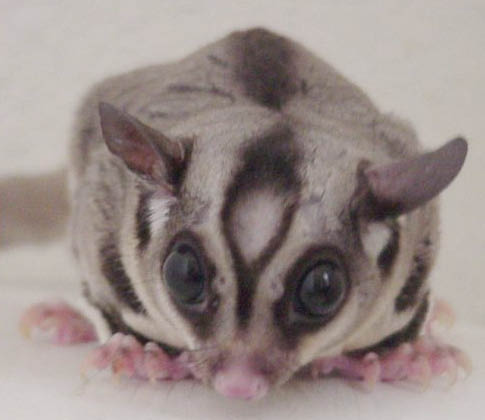,_Bruny_Island,_Tasmania,_Australia_by_JJ_Harrison.jpg)
You might have seen recently that swift parrots – little green parrots that migrate between mainland south east Australia and Tasmania – are headed for extinction. In modelling published in Biological Conservation, my colleagues and I found that these parrots could be all but gone within 16 years, largely through being eaten by sugar gliders.
Let’s stop Tasmania’s swift parrots going the way of the dodoDejan Stojanovic
Swift Parrot (Lathamus discolor), Bruny Island, Tasmania, AustraliaJJ Harrison
92 | BWA December 2015
Today, we are launching a crowdfunding campaign to protect swift parrots and two other Tasmanian birds: orange-bellied parrots, and forty-spotted pardalotes. All three of these birds are threatened by sugar gliders. We are tying to develop glider-proof nest boxes, and undertake urgent research to understand how sugar gliders may be affecting these endangered Tasmanian birds. To do this, we’ve teamed up with Australia’s leading political cartoonists to raise money to support our research.
Swift parrots are currently listed as endangered at state, federal and international levels. But our modelling shows that the parrots meet international guidelines for being listed as critically endangered, joining nearly a hundred other animals facing a similar threat of extinction in Australia.
Parrot conflict zone
Swift parrots are one of only three migratory parrot species (the orange-bellied parrot, also found in Tasmania, is also critically endangered), and they spend their lives following rich patches of flowering trees across the forests of south east Australia.
This lifestyle brings them into direct conflict with people, and as a consequence of deforestation, collisions with human made structures, and other changes to their habitat, the species is seriously threatened.
Consequently, swift parrots pose big problems for those trying to save them, and are a regular subject of controversy.
Migratory species such as swift parrots are vulnerable to habitat degradation even in relatively small parts of their range.
This is because the entire population of swift parrots converges on small patches of flowering Tasmanian forest where the right trees occur to breed. Bottlenecks like these magnify the effects of habitat loss and other threats like predation.
Swift parrot nesting habitat has been deforested for agriculture, urban development and logging. Birds looking for a place to nest are squeezed into remaining habitat where they are very vulnerable to other threats.
Sweet possums with a savoury tooth
Recent research revealed that on the Tasmanian mainland, sugar gliders (a species probably introduced to Tasmania) are eating swift parrots in extraordinary numbers. Gliders eat eggs, nestlings and adult female swift parrots, as well as several other bird species that are small enough to subdue.
Swift parrots are more likely to be killed by a glider when forest in the surrounding landscape is disturbed. In small patches of nesting habitat where deforestation is severe, gliders can eat up to 100% of swift parrot nests.
These astonishingly high predation rates have worrying implications for the viability of the swift parrot population over the long term. Deforestation in important swift parrot breeding areas is still happening despite the link between forest loss and predation, and is the focus of ongoing dispute.
“... swift parrots pose big problems for those trying to save them ...
Nesting boxes intended for use by orange-bellied parrots in Melaleuca, South West TasmaniaJJ Harrison

BWA December 2015 | 93
Given the severe threats faced by swift parrots, we considered it pertinent to reassess whether swift parrots still fit the bill for an endangered classification. To do this, we conducted a population viability analysis for swift parrots using information we gathered from four years of intensive research. Using data on swift parrot movements, predation rates and reproductive success, we modelled how swift parrots might cope with predation by sugar gliders.
Our results reveal that swift parrot populations are on track for population collapse within three generations as a result of sugar glider predation.
We show that even breeding on predator free offshore islands is not enough to buffer swift parrot populations, and the species could decline by a catastrophic 94.7%.
That’s the good news
Our models are best-case scenarios: we ignored other factors that kill swift parrots (collisions with windows, habitat loss, food limitation, inbreeding, disease). Based on our data, swift parrots are on an extinction trajectory, and their current listing as endangered does not reflect their true conservation status.
To qualify as critically endangered under internationally accepted guidelines, a species must decline by at least 80% over three generations, which for swift parrots

“Gliders eat eggs, nestlings and adult female swift parrots ...
Sugar glider LA Dawson
94 | BWA December 2015
is 16 years. Our models indicate that the rate of decline of swift parrots exceeds this threshold.
This is very bad news for the conservation of the swift parrot. At present, native forest logging is the principle cause of deforestation in the breeding range of swift parrots. The extent of habitat loss in the swift parrot breeding range is very worrying, and has not abated despite two successive recovery plans highlighting deforestation as a threat.
Sugar gliders can survive in small patches of forest left over after land clearing, and swift parrots are forced into these patches by the lack of alternative habitat.
Given the link between the extent of forest around nests and the likelihood of predation, Tasmanian forest management needs a rethink. Our study shows that business as usual will lead to population collapse of swift parrots.
The evidence is in, and it is time to address the problem.
The article was first published in The conversation (an independent source of news and views, sourced from the academic and research community and delivered direct to the public) on 2 April 2015.
Dejan StojanovicPostdoctoral Fellow, Australian National University
See more on the topic hereLogging and clearing of land for farms has reduced the number of old hollow trees. Sugar gliders introduced from mainland Australia are competing with swift parrots for hollows, and are winning, killing birds and eating eggs. At the present rate of decline swift parrots will be extinct in 16 years. See abc.net.au

Lake Pedder from the Western ArthursNick S
BWA December 2015 | 95